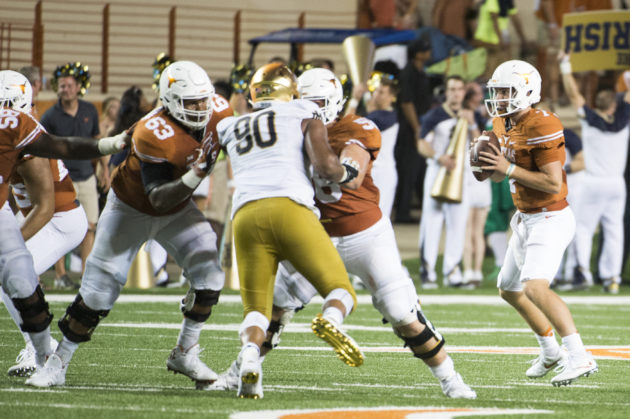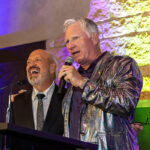How Texas Football is Getting Serious About Spotting Concussions
In November 2013, Steve Fainaru and Mark Fainaru-Wade, authors of League of Denial, wrote a story for ESPN.com that cited a 9.5 percent drop in youth football participation between 2010-12—23,612 players—which is thought to be the largest two-year decline since Pop Warner began compiling statistics. The reasoning, the brothers wrote, was directly linked to the NFL’s concussion crisis, then a burgeoning hot-button issue and now a ubiquitous component to the national discourse on football at all levels of play.
“Concussions are an unknown phenomenon,” Scott Anderson says. “We are trapped in a clinical situation where we’re reliant on subjective reporting by the patient.”
Anderson, who ran the sports medicine program at Stanford for 10 years and was part of a multidisciplinary group studying head injury, has recently joined SyncThink, a neuro-technology company that is bringing its EYE-SYNC technology to Texas football this season. The Longhorns are just the third major school to employ EYE-SYNC, which objectively evaluates impairments associated with concussions in order to assist in return to play decisions.
 “Timing and prediction—that’s the functional impairment we see in concussions all the time,” Anderson says. “People can’t time their response. It gives us confirmation that the patient is disoriented and we need to take them out because the outside world moving faster than they can respond to it.”
“Timing and prediction—that’s the functional impairment we see in concussions all the time,” Anderson says. “People can’t time their response. It gives us confirmation that the patient is disoriented and we need to take them out because the outside world moving faster than they can respond to it.”
Here’s how it works: SyncThink utilizes existing VR technology modified with the company’s propriety eye tracking technology. The cameras in the headset, fitted with a smartphone, records eye movements in a player, specifically as the eyes track a red dot moving around a circle. Synced to a tablet, a team doctor can analyze that data to make sure the player is oriented to time and space.
“The response is tremendous,” Anderson says. “It’s a bond that’s established between a clinician and an athlete. I’m showing you proof you’re back to normal. No athlete wants to take someone’s word for it anymore. They want to see something.”
How Texas ended up purchasing the system for implementation in the football program—and, possibly, for other contact sports in the future as well—came down to the athletic department’s enthusiasm for the program and its willingness to get started using EYE-SYNC as soon as possible, Anderson says.
“My understanding is [UT’s] sports medicine program has a strong foundation and history of being cutting-edge,” he says. It’s synonymous with doing everything possible they can for their student athletes.”
Anderson wasn’t with the company then—he joined one month ago—but says SyncThink presented demos to various team representatives at a technology conference hosted by the Big 12 this offseason. The Longhorns jumped at the chance, and SyncThink spent two days with team doctors and trainers during the offseason and will be available for support during the season.
“The relationship was an easy and natural thing because they wanted what every program should want and we were in a position to help them,” Anderson says. “They recognize value in what the athlete will get.”
Anderson says the athletes respond well to EYE-SYNC too, a tool he has been using for almost three years at Stanford. Without data, doctors have to rely on what they see and what the player tells them. If a game is tight or a player is fighting for playing time, he may not want to leave a game, despite experiencing concussion symptoms. That leaves him open to further injury. Similarly, a doctor may clear a player for return before he feels he’s ready. With data to back up the diagnosis, all sides can feel safer about continued practice and play.
“We’re being diligent and collecting info to identify the problem that makes us concerned about their participation,” Anderson says. “They appreciate that. It’s not, ‘Go into a dark room for two weeks and come back when you feel better.'”


















No comments
Be the first one to leave a comment.